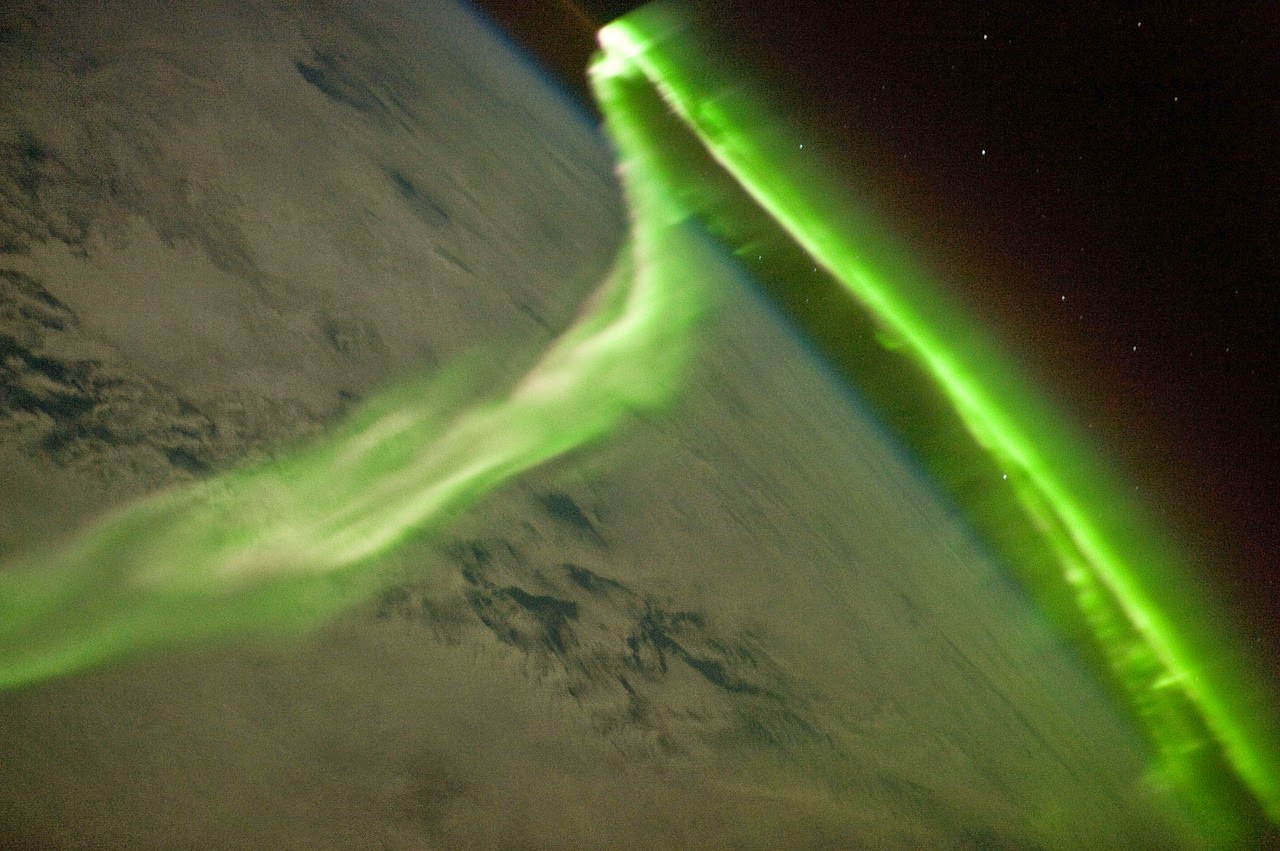Auroras are a common thing to be seen in Iceland on this time of year.An aurora is a natural light display in the sky (from the Latin word aurora, "sunrise" or the Roman goddess of dawn), predominantly seen in the high latitude (Arctic and Antarctic) regions. The name ”auroras” is now more commonly used for the linguistic plural ”aurorae” of ”aurora”.
Auroras are caused by charged particles, mainly electrons and protons, entering the atmosphere from above causing ionisation and excitation of atmospheric constituents, and consequent optical emissions. Incident protons can also produce emissions as hydrogen atoms after gaining an electron from the atmosphere.
The spectacle of Aurora Borealis requires dark and partly clear skies.So if you are traveling to see this sort of a light show in the sky, you are going to have to go far away from the comfort off the city so the light's on the ground don't ruin view you have.
Most auroras occur in a band known as the auroral zone which is typically 3° to 6° wide in latitude and between 10° and 20° from the geomagnetic poles at all local times (or longitudes), most clearly seen at night against a dark sky. A region displaying an aurora at any given time is known as the auroral oval, a band which is displaced towards the nightside of the Earth. The day-to-day positions of the auroral ovals are posted on the internet.[3] A geomagnetic storm causes the auroral ovals (north and south) to expand, and bring the aurora to lower latitudes.
Early evidence for a geomagnetic connection comes from the statistics of auroral observations. Elias Loomis (1860) and later in more detail Hermann Fritz (1881) and S. Tromholt (1882) established that the aurora appeared mainly in the "auroral zone", a ring-shaped region with a radius of approximately 2500 km around the Earth's magnetic pole. It was hardly ever seen near the geographic pole, which is about 2000 km away from the magnetic pole. The instantaneous distribution of auroras ("auroral oval") is slightly different, being centered about 3–5 degrees nightward of the magnetic pole, so that auroral arcs reach furthest toward the equator when the magnetic pole in question is in between the observer and the Sun. The aurora can be seen best at this time, which is called magnetic midnight.
Auroras seen within the auroral oval may be directly overhead, but from farther away they illuminate the poleward horizon as a greenish glow, or sometimes a faint red, as if the Sun were rising from an unusual direction. Its southern counterpart, the aurora australis (or the southern lights), has features that are almost identical to the aurora borealis and changes simultaneously with changes in the northern auroral zone. It is visible from high southern latitudes in Antarctica, South America, New Zealand, and Australia. Auroras also occur on other planets. Similar to the Earth's aurora, they are also visible close to the planets’ magnetic poles. Auroras also occur poleward of the auroral zone as either diffuse patches or arcs, which can be sub-visual.
This one and the one above are taken from a satellite camera, in a circular orbit around the earth.









